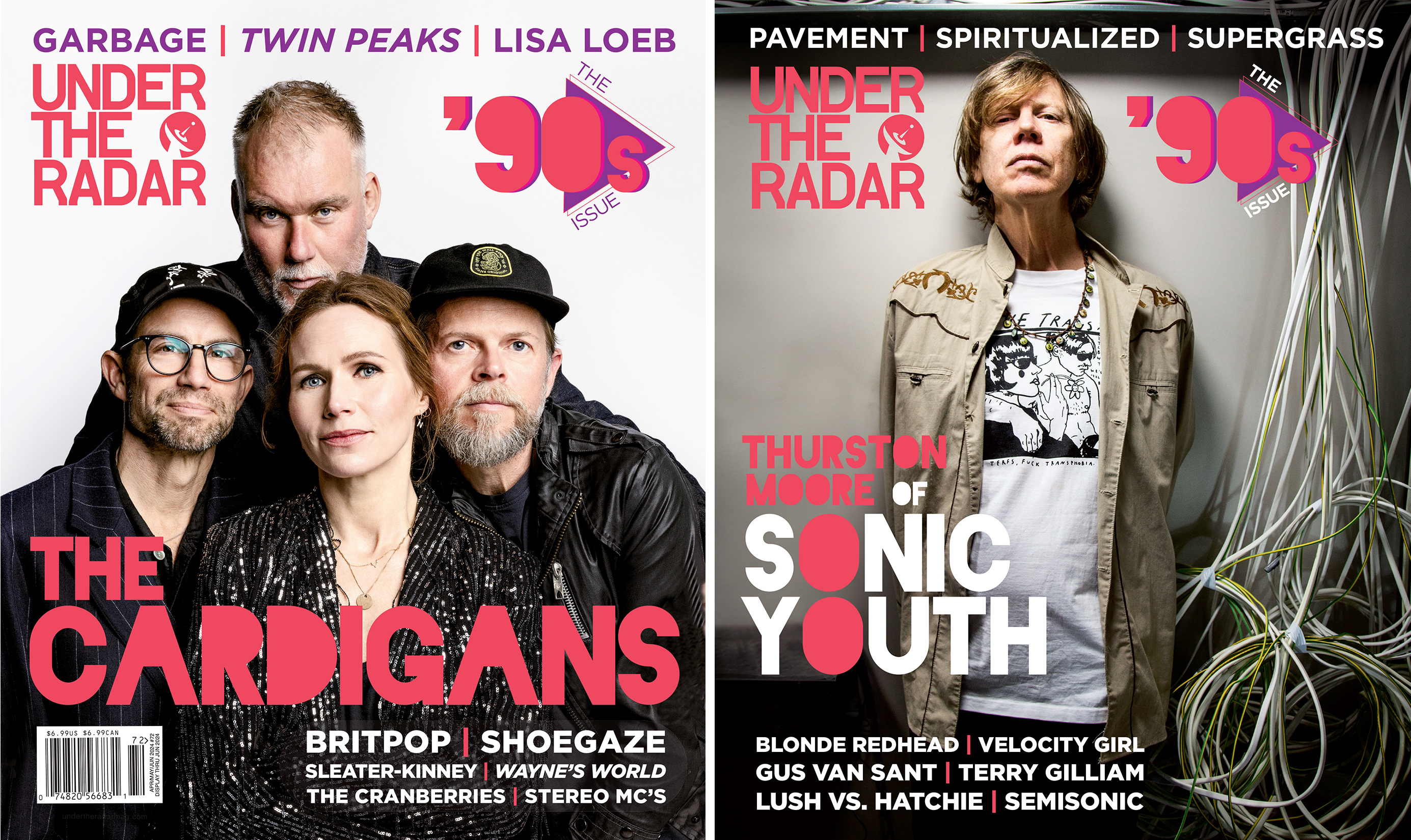
Under the Radar Announces The ’90s Issue with The Cardigans and Thurston Moore on the Covers
Issue 72 Also Features Articles on Britpop and Shoegaze, As Well as Interviews with the Cast of Twin Peaks, Garbage, The Cranberries, Pavement, Lisa Loeb, Supergrass, Spiritualized, Gus Van Sant, Terry Gilliam, Lush, Blonde Redhead, and More
Apr 19, 2024
Photography by Ian Maddox (The Cardigans) and Derrick Santini (Thurston Moore)
![]()
Under the Radar is excited to announce the full details of our new print issue, Issue 72, The ’90s Issue, which features interviews with musicians and film directors known for their work in that decade and has The Cardigans and Thurston Moore of Sonic Youth on the two covers.
The issue has shipped out to subscribers and can now be bought from us directly here. The issue is also available to purchase nationwide (on newsstands, in such stores as Barnes & Noble and Books-A-Million, and elsewhere).
As well as articles on Britpop, shoegaze, and the TV show Twin Peaks (for which we spoke to much of the cast), the issue includes interviews with Garbage, The Cranberries, Pavement, Lisa Loeb, Supergrass, Spiritualized, Lush, Ride, Velocity Girl, Gus Van Sant, Penelope Spheeris, Terry Gilliam, Stereo MC’s, Semisonic, Blonde Redhead, Sleater-Kinney, and more.
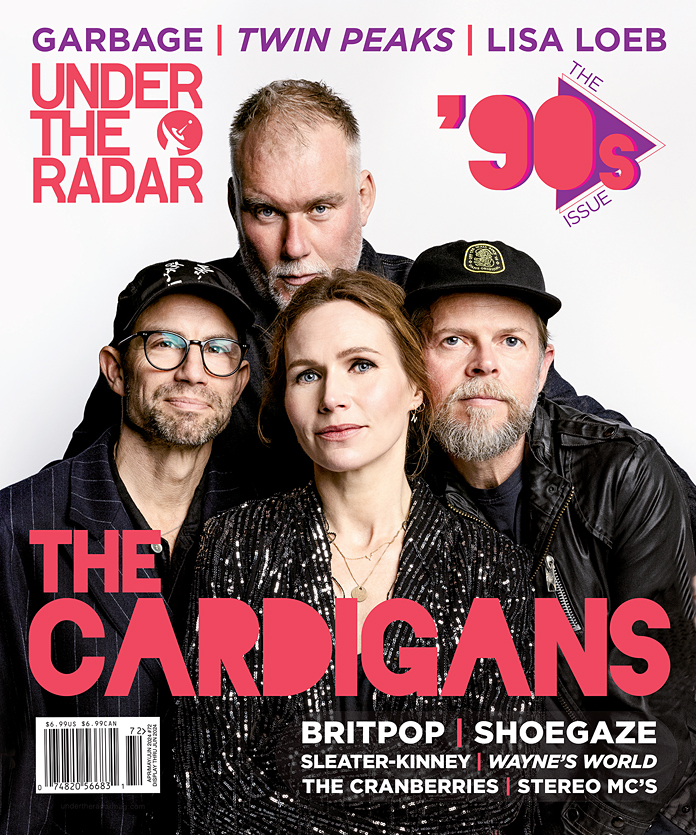
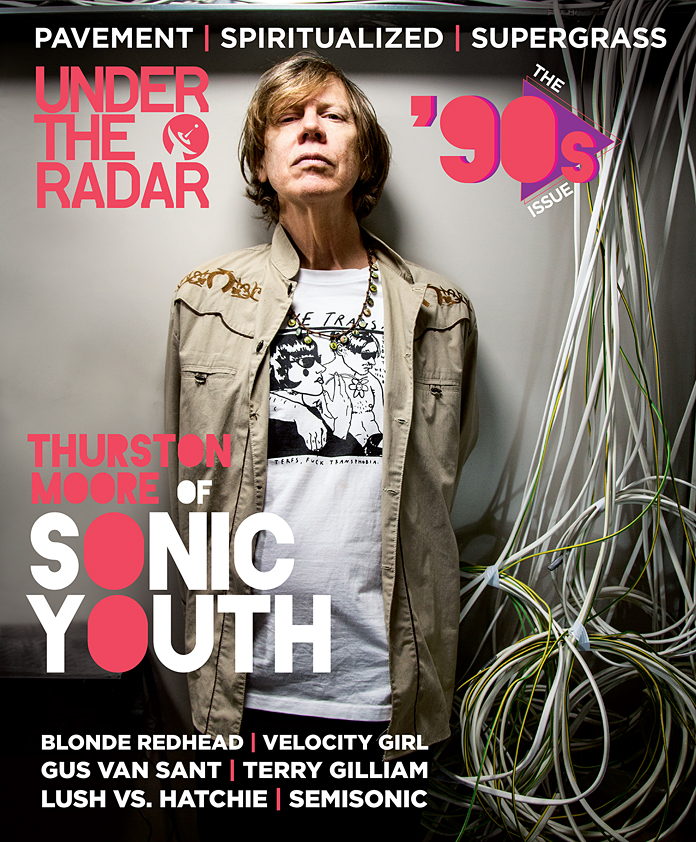
COVER STORIES
The Cardigans
Gary Knight spoke to Nina Persson, the singer in the Swedish indie-pop band The Cardigans, about their entire career, from 1994’s debut album, Emmerdale, to their most recent album, 2005’s Super Extra Gravity, as well as their 1996 monster hit “Lovefool,” one of the most iconic songs of the ’90s, and their current career touring and playing festivals. Ian Maddox photographed The Cardigans exclusively for Under the Radar at the Darker Waves festival in Huntington Beach, CA.
“There’s been some years when it was a little embarrassing to admit it, and I tried to suppress it, but now it’s totally streetwise to have nostalgia for the ’90s.” – Nina Persson
“I’ve been working as a teacher at a conservatory to people who are totally romanticizing the ’90s. And now my teenage kid is all about ’90s bands and stuff. People want to talk about it.” – Nina Persson
“We sucked the best out of the ’90s, because we had an amazing time getting to be a band on a major label. So, we got to enjoy the years where people threw money around like crazy, which was fun.” – Nina Persson
“I have a lot of different feelings about [‘Lovefool’] in different contexts, but I do really think it’s a great song, and I do enjoy playing it. There were many years when I hated playing it.” – Nina Persson
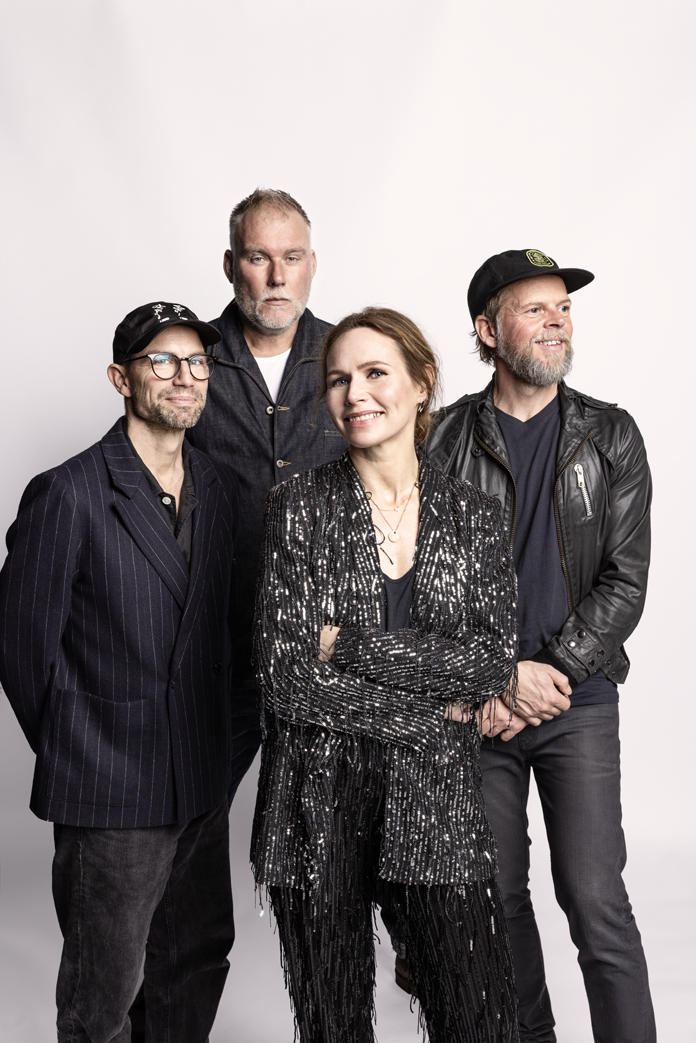
Thurston Moore of Sonic Youth
For our other cover story, Kyle Mullin spoke to Thurston Moore of Sonic Youth about the band’s ’90s albums (especially Goo and Dirty) and his 2023 memoir, Sonic Life. Derrick Santini photographed Moore exclusively for Under the Radar in London.
“Not only were we playing huge stages, but we were also playing our new, weirdo, spindly guitar music. I could see interest on some of the collective faces of these big audiences. But at the same time, I also knew they were thinking: ‘I can’t wait until Metallica comes out here and fixes all this.’” – Thurston Moore
“We used to have this notion through the ’80s, ‘Wouldn’t it be interesting if a band like us had the production value of Aerosmith?’ With Goo, that’s exactly what was going down.” – Thurston Moore
“We were a bit conflicted about entering this corporate sphere, so the best way for us to deal with that was to treat it with absurdity.” – Thurston Moore
“As much as I love mainstream music, I was way more interested in the nether reaches of noise music basement gigs. Or the small club scene around the riot grrrl bands. Or what Pavement was doing.” – Thurston Moore
“It’s wonderful to be noticed for your work, but I don’t want to have to walk down the street and have everybody dog me. So in some ways, it’s a saving grace that I never became Bono.” – Thurston Moore
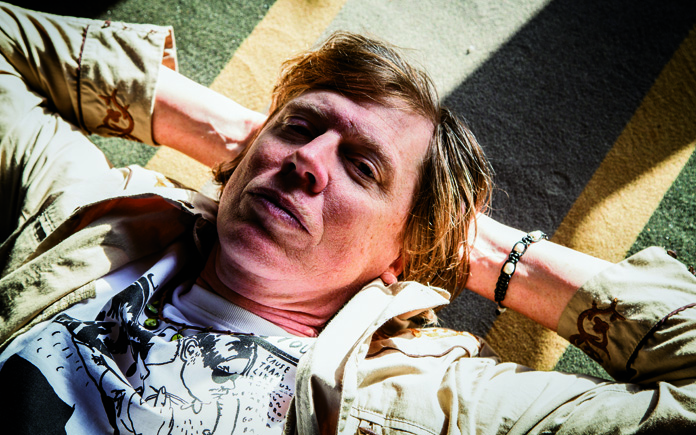
1990S FEATURES
Britpop
For Lily Moayeri’s article “The Britpop Invasion of North America: A Second Coming for Anglophiles, Not So Much for Everyone Else,” she spoke to members of The Boo Radleys, The Charlatans, Echobelly, Kula Shaker, Menswe@r, and Supergrass, as well as music industry professionals and photographer/club promoter Piper Ferguson, about the impact of Britpop, and its fandom, in North America. In a separate article, Ian King picks the 30 best Britpop B-sides.
“On a superficial level, it was white, male, British lad culture. In reality, Britain is multicultural and there were not so many people of color in Britpop. I did find I was the exception to the rule.” – Sonya Madan of Echobelly
“The ’90s were very sarcasm heavy. There was this attitude of, ‘Oh, must I do cocaine? Oh, okay then.’ I’m not going to deny that kind of thing is fun. When you’re young and silly, you don’t realize that somewhere someone is suffering for what you’re doing.” – Johnny Dean of Menswe@r
“Part of the problem with Britpop in America was that American was very much still enthralled with grunge.” – Simon “Sice” Rowbottom of The Boo Radleys
“There was a definite sea change in the way people were looking at things. After years of feeling downtrodden, people were able to enjoy living a bit better. They had more money in their pockets and seemed to be more relaxed.” – Mick Quinn of Supergrass
“I loved how popular British music was. But not the message. It was a bit too much.” – Tim Burgess of The Charlatans
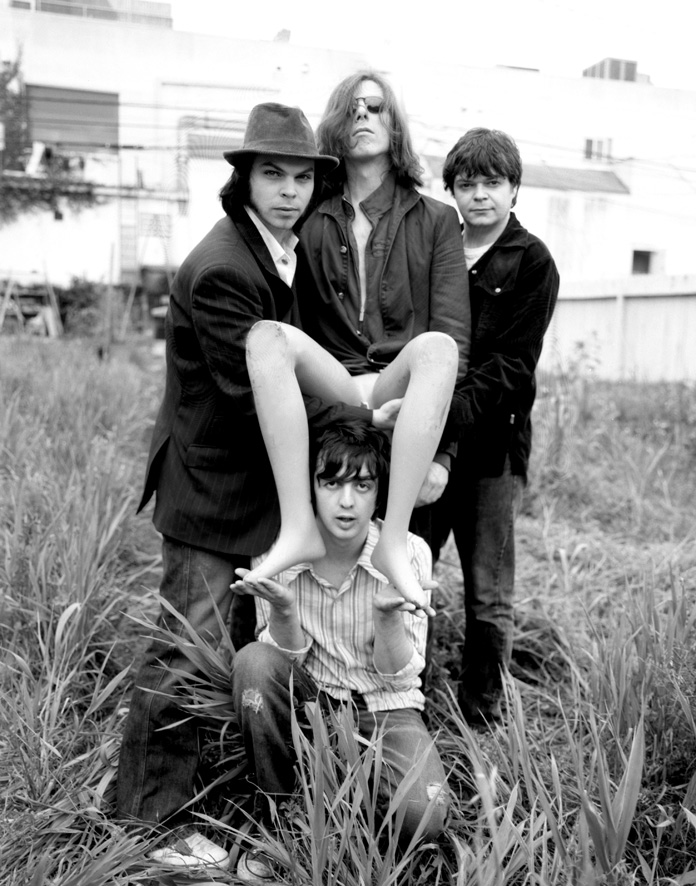
Shoegaze
In Kyle Mullin’s article “Shoegaze in the ’90s: Celebrating the Scene That Celebrated Itself,” he spoke to members of Slowdive, Ride, Lush, Cocteau Twins, Pale Saints, and Swerverdriver about the genre’s heyday and its modern resurgence. In a separate article, Mullin moderates a joint interview between Lush’s Miki Berenyi and current Australian shoegaze/dream pop artist Hatchie (born Harriette Pilbeam).
“You can make a lot of noise, then write a melody on top, and there you go, you have a shoegaze classic. You don’t have to be great musicians to do it.” – Steve Queralt of Ride
“The really good shoegaze songs are when those bands play them acoustically, and they’re still fantastic songs.” – Robin Guthrie of Cocteau Twins
“Being women back then was trickier, when being in the public eye. Melody Maker would list ‘The Sexiest Human’ and all these things that are so outdated now.” – Emma Anderson of Lush
“I’d meet these kids that were into shoegaze. Bands would tell me all the time that they were trying to sound like Slowdive circa Pygmalion, which I didn’t know what to think of to be honest!” – Neil Halstead of Slowdive
“In the ’90s, there was zero fucking understanding of mental health in the music industry, which wasn’t great. Now, people are quite mindful about it.” – Miki Berenyi of Lush
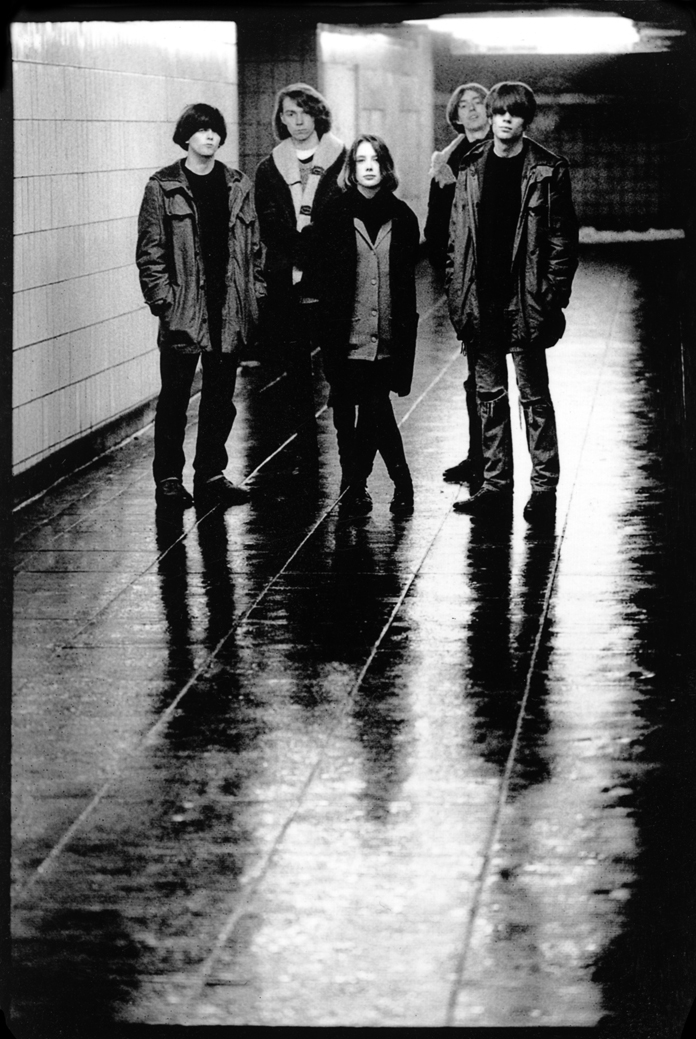
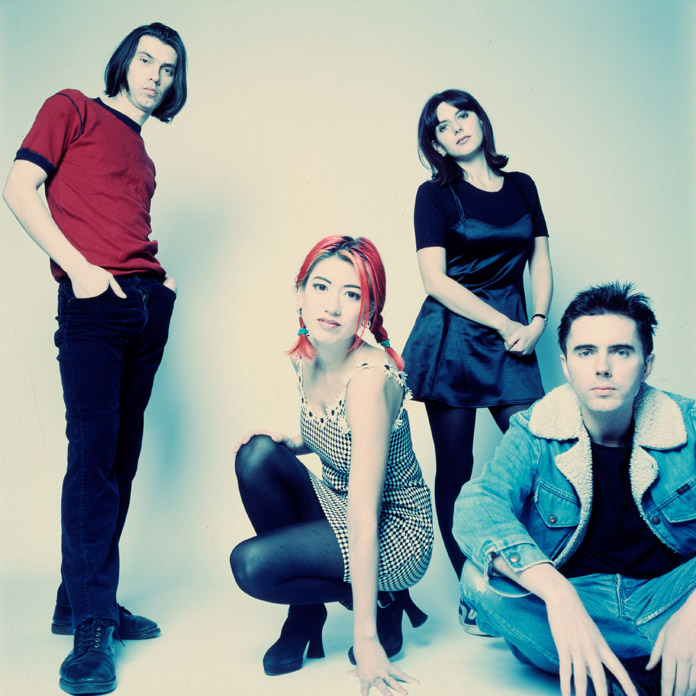
Warchild’s HELP Album
In Celine Teo-Blockey’s “Come Together: The Story Behind War Child’s HELP Album,” she digs into how the greatest charity album of the 1990s came together, one that was recorded in only one day and released only a few days later, and featured some of the biggest British artists of the time, including Radiohead, Blur, Oasis, Massive Attack, Portishead, Manic Street Preachers, The Charlatans, and others. Teo-Blockey spoke to the charity War Child and some of the musicians on the album, including members of The Boo Radleys, Stereo MC’s, and Salad.
“We were in the studio and it would be like, ‘Who’s coming? And oh, Noel Gallagher’s flying back from Australia, he might make it for this cover’…it was all really exciting.” – Simon “Sice” Rowbottom of The Boo Radleys
“It was the absolute mega center of indie music going mainstream. But it was also the Bosnian war which was why we were there…you had to put your ego, fear, and insecurities aside.” – Marijne Van Der Vlugt of Salad
“It had a real sense of purpose about it.” – Rob Birch of Stereo MC’s
Current Artists on the 1990s
We spoke to various current musicians about their favorite things from the 1990s, including alt-J, Lucy Dacus, Foals, Grandaddy, Horsegirl, Alex Lahey, actor Joel McHale, Orville Peck, Squid, Sunflower Bean, Jess Williamson, and Wolf Alice.
“This event does not inspire my art. It’s just the wildest thing that I could think of from the ’90s.” – Lucy Dacus
“There was something about the ’90s that was really unhinged.” – Yannis Philippakis of Foals
“My brother and I would watch it every single night and has really become a foundation of certainly my sense of humor and also my style of communicating. I do a lot of communicating through Simpsons quotes.” – Alex Lahey
“I really liked The Downward Spiral when I was really young because it’s super angry and moody and quite fit for a teenager, on the surface.” – Ollie Judge of Squid
“My favorite thing from the ’90s is something that I think a lot of people don’t realize is from the ’90s, and it’s Harvest Moon by Neil Young.” – Jess Williamson
Music in the 1990s
The ’90s Issue also features interviews with the following musicians of the era: Blonde Redhead, The Cranberries, Garbage, Lisa Loeb, Pavement, Semisonic, Sleater-Kinney, Spiritualized, Stereo MC’s, Supergrass, and Velocity Girl.
“My horse just passed away, who was like my soulmate. I was so depressed and devastated, I was crying and screaming.” – Kazu Makino of Blonde Redhead
“Dolores had injured her leg skiing when we’d recorded the second album and it had never really fully healed. When we went back on tour, it started to act up because she was jumping all over the place full of adrenaline and eventually her knee gave in again.” – Fergal Lawler of The Cranberries
“We got back in the car to drive back to Madison and we switched on the radio, and they were playing ‘Vow’ by Garbage. That was the beginning of the ’90s for me.” – Shirley Manson of Garbage
“I definitely was really annoyed when people would ask me about my glasses. I’d rather you ask me about my guitar playing, my songwriting, my past as a musician.” – Lisa Loeb
“We were playing after, God rest her soul, Sinéad O’Connor when the tour started. There would be 12,000 people watching her brilliance and then we’d come out. Basically, [people would] go get something to eat or go to the mist tent or whatever.” – Bob Nastanovich of Pavement
“It’s weird because if there are 20 songs from the ’90s that still get played at The Home Depot, ‘Closing Time’ is definitely one of those. It’s like, ‘How did that happen?’” – Dan Wilson of Semisonic
“We’re proud of what we’ve accomplished and certainly proud of the records that we made in the ’90s, and the way that we tried to run in the community.” – Corin Tucker of Sleater-Kinney
“I’ve always thought Spiritualized works best when it’s overachieving.” – Jason Pierce of Spiritualized
“The social climate in London was very agitated.” – Rob Birch of Stereo MC’s
“It was quite a lot to take in at the time, we were just doing so much and didn’t really have time to stop and think about it.” – Mick Quinn of Supergrass
“Around the time we did ¡Simpatico! I had this flash of what music did to me when I was a teenager. I wanted to make a New Order record or a Cure record or an Echo and the Bunnymen record. And the 55-year old me now can accept the fact that we did that for some teenagers at that time.” – Archie Moore of Velocity Girl
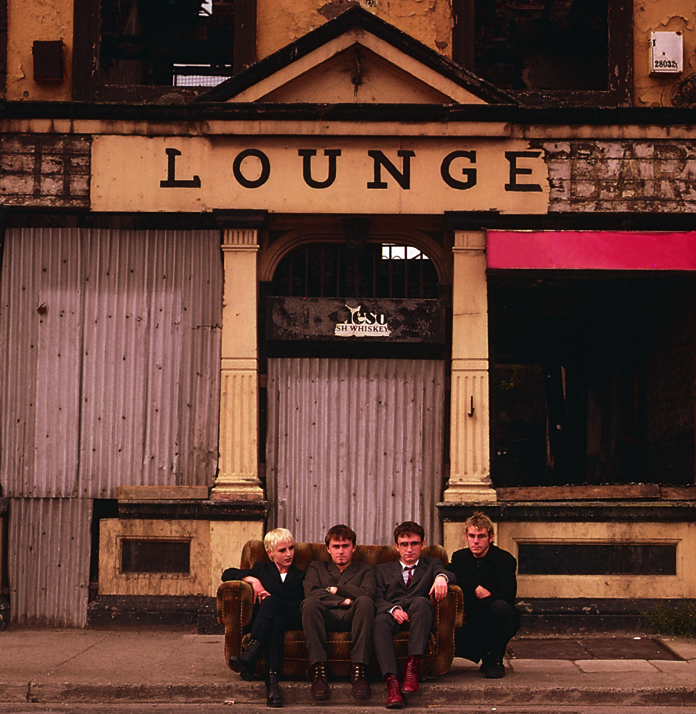

Film in the 1990s
We spoke to four film directors about their movies from the 1990s: Terry Gilliam on The Fisher King and 12 Monkeys, Penelope Spheeris on Wayne’s World, Ron Underwood on Tremors and City Slickers, and Gus Van Sant on My Own Private Idaho and Good Will Hunting.
“[Robin Williams’] brain was one of the fastest things I’ve ever been near. He could bring in all this information, then mix it up, and out it came in outrageously funny, poignant, and surprising ways.” – Terry Gilliam
“It was a lot of good people working together and just the perfect chemistry that made it all come together. I don’t ever like to take too much credit for that movie.” – Penelope Spheeris
“We worked on [Tremors] for five years to get it off the ground. It was met with a lot of blank stares by studio executives wondering what we were talking about with 30-foot underground worms that were devastating this town.” – Ron Underwood
“[Keanu Reeves] would talk about wanting to do action movies, and I thought he was crazy. But that’s what he said he wanted to do. And he did it.” – Gus Van Sant
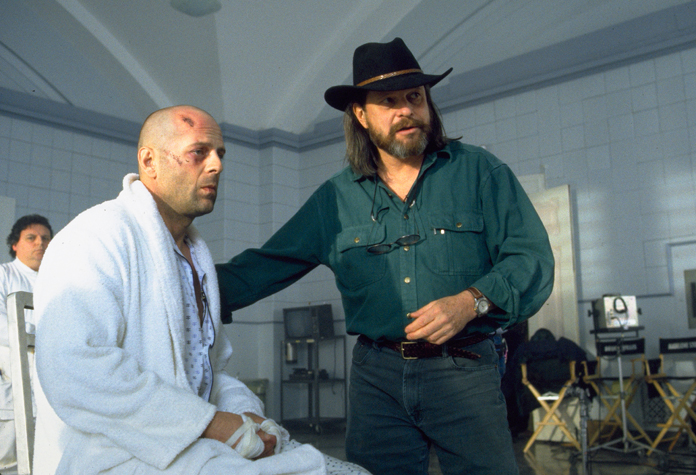
Twin Peaks
For Austin Trunick’s incredibly in-depth article, “Twin Peaks: Building the Most Groundbreaking Show of the ’90s,” he spoke to many of the cast members from David Lynch and Mark Frost’s legendary early ’90s TV show, including Kyle MacLachlan, Mädchen Amick, Piper Laurie, Michael Horse, Kimmy Robertson, Wendy Robie, Charlotte Stewart, and Carel Struycken. He also spoke to Duwayne Dunham (who directed some of the episodes), Twin Peaks expert and author John Thorne, and Lynch’s daughter, Jennifer Lynch, who also wrote the official companion book, The Secret Diary of Laura Palmer. Piper Laurie, also a star in Hollywood’s golden age, passed away a few months after our interview with her, making this one of her final interviews.
“It paved a completely new path for filmmaking on television. There are so many shows I still see that are following that mold. We broke open a chasm.” – Mädchen Amick
“[David Lynch is] like Jimmy Stewart with Salvador Dali’s intestines.” – Michael Horse
“David Lynch is so open, and doesn’t want to cut off the possibility of new ideas. He leaves everything open, just like life is.” – Piper Laurie
“People absolutely tried to pull it out of me, in daily life and on television. I knew who the killer was, and it made sense to me. It was the darkest answer. The most potent option.” – Jennifer Lynch
“I think there comes with age a calmness, and it’s there when working with David [Lynch]. There’s no uncertainty.” – Kyle MacLachlan
“I’m sure there’s stuff that I’ll never know [about Twin Peaks], and that’s what David Lynch gets so much glee from. There are so many secrets, inside secrets, inside more secrets.” – Kimmy Robertson
“All of the citizens of Twin Peaks—all of these people were all odd and singular. Many were crazy. Tortured, broken, beautiful. And to David Lynch, broken is beautiful.” – Wendy Robie
“We weren’t even allowed to be on the set unless we were working, so we had to watch the show to find out what was happening.” – Charlotte Stewart
“There was nothing related to reality that you could hold onto…I think that was the feeling that everybody had: it was almost like David Lynch was putting everybody into some sort of trance.” – Carel Stuycken
“I felt [Twin Peaks] was playing to the great strengths of television, which is that you could tell this long, ongoing story. You had to pay attention and think about what you’d watched the week before, and piece together all of those things. Television rarely took advantage of that, but Twin Peaks certainly did.” – John Thorne
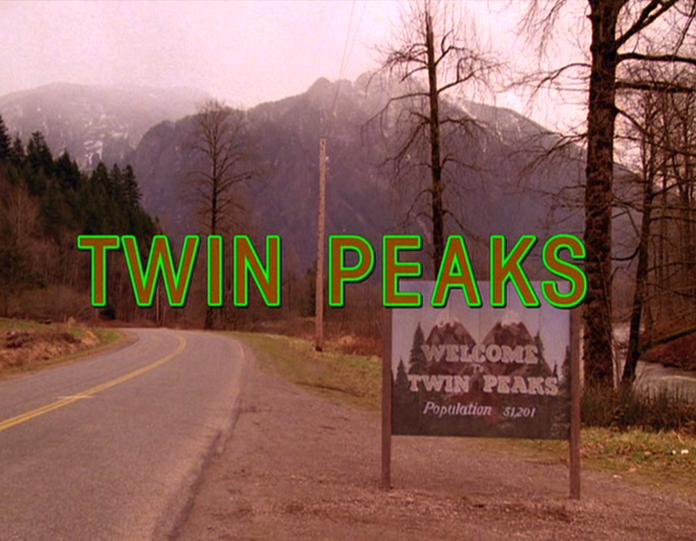
THE END
For our regular last page feature, The End, we ask a different artist the same set of questions about endings and death. Gruff Rhys of ’90s Welsh band Super Furry Animals is this issue’s participant.
“A friend left a very good band as the other members aspired to printed set lists and he wanted to keep everything in the moment and on the fly—they broke up.” – Gruff Rhys
REVIEWS
Issue 72 has a selection of album reviews, including of the latest albums by the following:
Arab Strap
Birthmark
The Black Crowes
Cheekface
Dehd
Madi Diaz
Ducks Ltd.
Elbow
Everything Everything
Sam Evian
Future Islands
IDLES
Iron and Wine
The Jesus and Mary Chain
Katy Kirby
The Last Dinner Party
Adrianne Lenker
Mannequin Pussy
J Mascis
MGMT
Phosphorescent
Ride
Rosali
Sheer Mag
Sleater-Kinney
The Smile
SPRINTS
Still Corners
Waxahatchee
Faye Webster
Yard Act
DIGITAL SAMPLER
Each issue comes with a digital sampler that is a free download and includes up to 39 complimentary MP3s. This issue’s digital sampler includes tracks by:
IAN SWEET
Boeckner
Still Corners
Blonde Redhead
Slowdive
Emma Anderson
Sufjan Stevens
Laetitia Sadier
Tomato Flower
Ducks Ltd.
Ratboys
Waxahatchee
Sam Evian
Cheekface
Art Feynman
Mildlife
STRFKR
Everything Everything
Jane Weaver
Arab Strap
Drahla
Dehd
The Lemon Twigs
Smoke Ring Days
Tank Fight in Death Town
Tony Xenos
Faye Webster
Middle Kids
Katy Kirby
Mutual Benefit
Iron and Wine
SPRINTS
J Mascis
Jessica Pratt
Grandaddy
Omni
Birthmark
William Doyle
DIGITAL MAGAZINE
The digital version of the issue (for iPads, iPhones, Macs, and PCs) also features extra interviews not found in the print magazine, as well as additional full-page photos from our photo shoots for the issue.
The digital magazine features additional interviews with three ’90s artists discussing their new albums: Emma Anderson of Lush, Ride, and Teenage Fanclub. There are also three bonus articles in which the following current artists discuss their favorite things from the 1990s: The Go! Team, Shannon Lay, and The Natvral.
“I’m 56 and was actually only in Lush for eight or nine years, so it wasn’t really a long time. I think a lot of people imagine it to be longer, yet I’ve actually been an office worker far longer than I was in Lush! But if that’s what people define me by then I’m fine with that.” – Emma Anderson of Lush
“What right do you have to be offered shows and stages at festivals unless we’re still really good? That’s the pressure and hopefully we’ve risen to that occasion.” – Mark Gardener of Ride
“[My dad’s] running out of people’s funerals to go to as he gets older. It’s just part of the process of life and death.” – Norman Blake of Teenage Fanclub
Click here to buy the print version of the issue.
Click here to buy the digital version of the issue.
Click here to subscribe to the print version of Under the Radar.
Click here to support us on Patreon.
Current Issue

Issue #72
Apr 19, 2024 Issue #72 - The ‘90s Issue with The Cardigans and Thurston Moore
Most Recent
- Under the Radar Announces The ’90s Issue with The Cardigans and Thurston Moore on the Covers (News) — The Cardigans, Thurston Moore, Sonic Youth, Garbage, The Cranberries, Pavement, Lisa Loeb, Supergrass, Spiritualized, Lush, Miki Berenyi, Miki Berenyi Trio, Emma Anderson, Hatchie, Ride, Slowdive, Velocity Girl, Penelope Spheeris, Terry Gilliam, Gus Van Sant, Ron Underwood, Kula Shaker, Salad, Foals, Semisonic, The Boo Radleys, Stereo MC’s, Pale Saints, Blonde Redhead, Sleater-Kinney, Cocteau Twins, Lucy Dacus, Alex Lahey, Horsegirl, Grandaddy, alt-J, Squid, The Natvral, Wolf Alice, Jess Williamson, Sunflower Bean, Orville Peck, Joel McHale
- Fresh Shares New EP ‘Merch Girl’ (News) — Fresh
- Premiere: LOVECOLOR Shares New Video for “Crazy Love” (News) — LOVECOLOR
- Final Summer (Review) — Cloud Nothings
- Tallinn Music Week, Tallinn, Estonia, April 3-7, 2024 (Review) — Virta, Musta Huone, Mari Kalkun, Sven Grünberg

Comments
Submit your comment